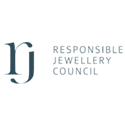Gold has always been revered for its enduring value and beauty, but beyond its physical allure lies its role as a financial safe haven. In times of geopolitical unrest, investors often turn to gold as a protective measure against the unpredictability of markets. This blog explores the intricate dance between global tensions and gold prices, shedding light on why gold remains a favoured refuge for those looking to safeguard their investments against the backdrop of international disputes.
The Relationship Between Geopolitics and Gold Prices
Gold’s appeal during geopolitical turmoil is largely due to its status as a tangible asset that retains value independently of any single country’s economic performance. Unlike currencies or stocks, gold is not directly affected by interest rate decisions or corporate profitability. Instead, its value often inversely correlates with confidence in global markets. During periods of high uncertainty, whether due to economic sanctions, war, or political instability, gold prices tend to rise as investors seek stability in this time-tested asset.
Historical Context
Historically, significant geopolitical events have led to marked increases in gold prices. For instance, during the Gulf Wars, investors flocked to gold amidst the uncertainty, driving up its price. Similarly, the Brexit referendum in 2016 caused a surge in gold investment as the future of European markets became clouded with uncertainty. These instances highlight the reflexive turn to gold in times of global crisis, underscoring its role as a financial sanctuary.
The Gulf Wars
The use of Stinger missiles in the Middle East
The Gulf Wars, specifically the first Gulf War in 1990-1991 and the Iraq War in 2003, offer clear examples of how geopolitical tensions can dramatically affect gold prices due to their impact on global economic stability and investor sentiment. During these periods of military conflict, the inherent uncertainty and fear of potential economic downturns drive investors towards safer investment options, notably gold, which is traditionally viewed as a stable store of value in times of crisis.
The First Gulf War (1990-1991): When Iraq invaded Kuwait in August 1990, it triggered a sharp response from international forces led by the United States. The ensuing military conflict and the uncertainty it brought to the global oil supply and broader financial markets led to a surge in gold prices. Investors flocked to gold as a hedge against the potential economic fallout, with prices spiking in response to the initial invasion and again as coalition forces commenced operations to liberate Kuwait.
The Iraq War (2003): Similarly, the onset of the Iraq War in March 2003 saw a significant uptick in gold prices. The anticipation and commencement of military action contributed to global economic uncertainties, particularly concerning the stability of oil prices and potential impacts on the US and global economies. As a result, gold prices increased, reflecting its role as a safe-haven asset amidst geopolitical turmoil.
During these conflicts, gold’s appeal was not merely its historical perception as a store of value but also its tangible nature as a physical asset not directly tied to the performance of any particular country’s economy or the stability of its currency. This characteristic of gold underscores its reliability as an investment in times of geopolitical stress, with investors turning to gold as a means to safeguard their wealth against the unpredictability of war and its consequences on global markets.
These instances from the Gulf Wars underscore the broader phenomenon where geopolitical crises invariably lead to increased demand for gold, driving up its price. This pattern reaffirms the strategic importance of including gold in investment portfolios, particularly as a hedge against geopolitical risks and economic uncertainties.
The Brexit Referendum
Alexander Andrews / Protests after the result of the Brexit Referendum
The Brexit referendum, held on June 23, 2016, marked a pivotal moment for both the UK and the global markets. As the votes were tallied and it became clear that the UK had chosen to leave the European Union, a wave of uncertainty swept across financial markets worldwide. This uncertainty was not just confined to the stock markets or the British pound, which saw a significant decline, but also had a pronounced impact on gold prices.
In the immediate aftermath of the Brexit announcement, gold prices surged. This phenomenon can be attributed to gold’s reputation as a safe-haven asset during times of political and economic uncertainty. Investors and savers, worried about the volatility and the unpredictable impacts of Brexit on the global economy, turned to gold as a means of preserving their wealth. The demand for gold increased sharply, driving up its price.
This surge in gold prices post-Brexit serves as a textbook example of how geopolitical events can influence gold markets. It underscores the metal’s role as a financial safe haven during times of crisis. While equity markets and currencies may fluctuate wildly in response to political events, gold often retains its value or even appreciates, as investors seek stability.
The Brexit event also highlighted the interconnectedness of global markets. The decision by a single nation to change its relationship with a major economic bloc had ripple effects that were felt not just in Europe, but around the world. It demonstrated how geopolitical events in one region could drive investors globally to seek refuge in gold, thereby pushing up its price.
The increase in gold prices following the Brexit referendum is a reminder of the metal’s enduring value as a hedge against uncertainty. It showcases how, in times of significant geopolitical upheaval, gold remains a preferred asset for those looking to protect their investments from volatility and loss.
The US-China Trade War
The US-China Trade War represents a significant example of how geopolitical tensions can influence gold prices, offering a compelling case study of gold’s role as a safe-haven asset during periods of economic uncertainty.
The trade war, initiated in 2018, saw the world’s two largest economies engage in a tit-for-tat tariff exchange, affecting billions of dollars in goods and services. This prolonged period of trade tensions contributed to global economic uncertainty, leading to fluctuations in currency values, stock markets, and investment strategies worldwide.
Impact on Gold Prices
As tensions escalated, investors increasingly turned to gold as a hedge against the unpredictability of the market. This flight to safety is a classic reaction in times of economic uncertainty, as gold historically holds its value or even appreciates when other investments may falter. During key moments of the trade war, gold prices saw significant increases, reflecting the heightened demand for assets perceived as stable.
Mechanisms of Influence
Safe-Haven Demand: The uncertainty surrounding the trade war led to increased demand for gold as a safe haven. Investors sought to protect their wealth from volatility in the equity and currency markets, driving up the price of gold.
Currency Fluctuations: The trade war impacted the value of the US dollar and the Chinese yuan, among other currencies. Gold often moves inversely to the US dollar; as the dollar weakens, gold prices can rise as it becomes cheaper for investors holding other currencies to buy gold.
Market Sentiment: The trade tensions contributed to a risk-off sentiment in global markets. As investors became more risk-averse, they were more likely to invest in gold, known for its role as a defensive asset during times of market stress.
Inflationary Concerns: The tariffs and trade barriers introduced during the trade war raised concerns about potential inflationary pressures, which could erode the value of paper currency. Gold is often seen as an inflation hedge, further increasing its appeal during the trade war.
Current Geopolitical Issues and Gold
Ongoing Israeli Invasion of Gaza and the Threat of War Expanding to Lebanon
The Israeli invasion of Gaza and the looming threat of the conflict spreading to Lebanon have heightened tensions in the Middle East, a region already fraught with instability. Such conflicts often lead to market volatility, with investors seeking safe-haven assets like gold to hedge against uncertainty. The prospect of an expanded war, potentially involving more nations, underscores the role of gold as a stable investment during times when geopolitical tensions threaten the stability of financial markets.
The Houthi Blockade of the Red Sea and US Coalition Airstrikes in Yemen
The Houthi blockade of the Red Sea, a critical choke point for global shipping and oil transportation, coupled with US coalition airstrikes against Houthi targets in Yemen, exemplifies the complexities of regional power struggles. These events not only disrupt global trade routes but also exacerbate concerns over energy security and supply chains, driving investors towards gold as a protective asset against the economic repercussions of such disruptions.
Threat of Escalation into a Wider War with Direct Western Involvement
The recent US airstrikes against alleged Iranian-backed groups in Iraq and Syria introduce the possibility of a broader conflict involving direct Western military involvement. This escalation risk, amidst already strained US-Iran relations, contributes to global instability, pushing gold prices higher as the metal is traditionally viewed as a safe store of value in times of geopolitical strife.
Gold’s Role Amidst Geopolitical Tensions
In each of these scenarios, gold’s appeal as an investment option is reinforced by its historical role as a safe haven during times of conflict and uncertainty. As geopolitical tensions escalate, the demand for gold typically increases, reflecting its perceived value as a hedge against the potential economic impacts of military actions, trade disruptions, and regional instability. Investors turn to gold not only as a means of preserving capital but also as a strategic asset in diversifying investment portfolios against geopolitical risks.
These ongoing conflicts highlight the interconnectedness of geopolitical events and financial markets. As tensions mount, the role of gold in investment strategies becomes more pronounced, offering a semblance of stability amidst the uncertainty of international relations and the global economy.
Strategies for Investors
Diversification: Experts suggest that gold should not dominate an investment portfolio but rather complement other assets. A common recommendation is a 5-10% allocation towards gold, depending on one’s risk tolerance and investment horizon.
Timing: While timing the market is challenging, buying gold before geopolitical tensions escalate can be more beneficial than reacting after the fact. However, investors should avoid panic buying in response to news events, focusing instead on a long-term strategy.
Physical Gold vs. Gold Investments: Investors have options ranging from physical gold, such as coins and bars, to gold ETFs, mutual funds, and mining stocks. Each option comes with its own set of considerations, including storage, security, and liquidity.
The intricate relationship between gold and geopolitics underscores the metal’s enduring appeal as a safe haven asset. Historical patterns and current trends demonstrate that during times of geopolitical uncertainty, gold remains a favoured investment to protect wealth and hedge against market volatility. As global tensions continue to influence financial markets, gold’s role as a stabilizing force is likely to persist. Investors looking to navigate these turbulent times would do well to consider gold as part of a diversified investment strategy, bearing in mind the importance of timing, allocation, and the form of gold investment that best suits their individual needs and objectives.
Recent articles
The Global Gold Rush: Emerging Markets in the Gold Industry
The Tech Revolution: Gold’s Role in Modern Technology















